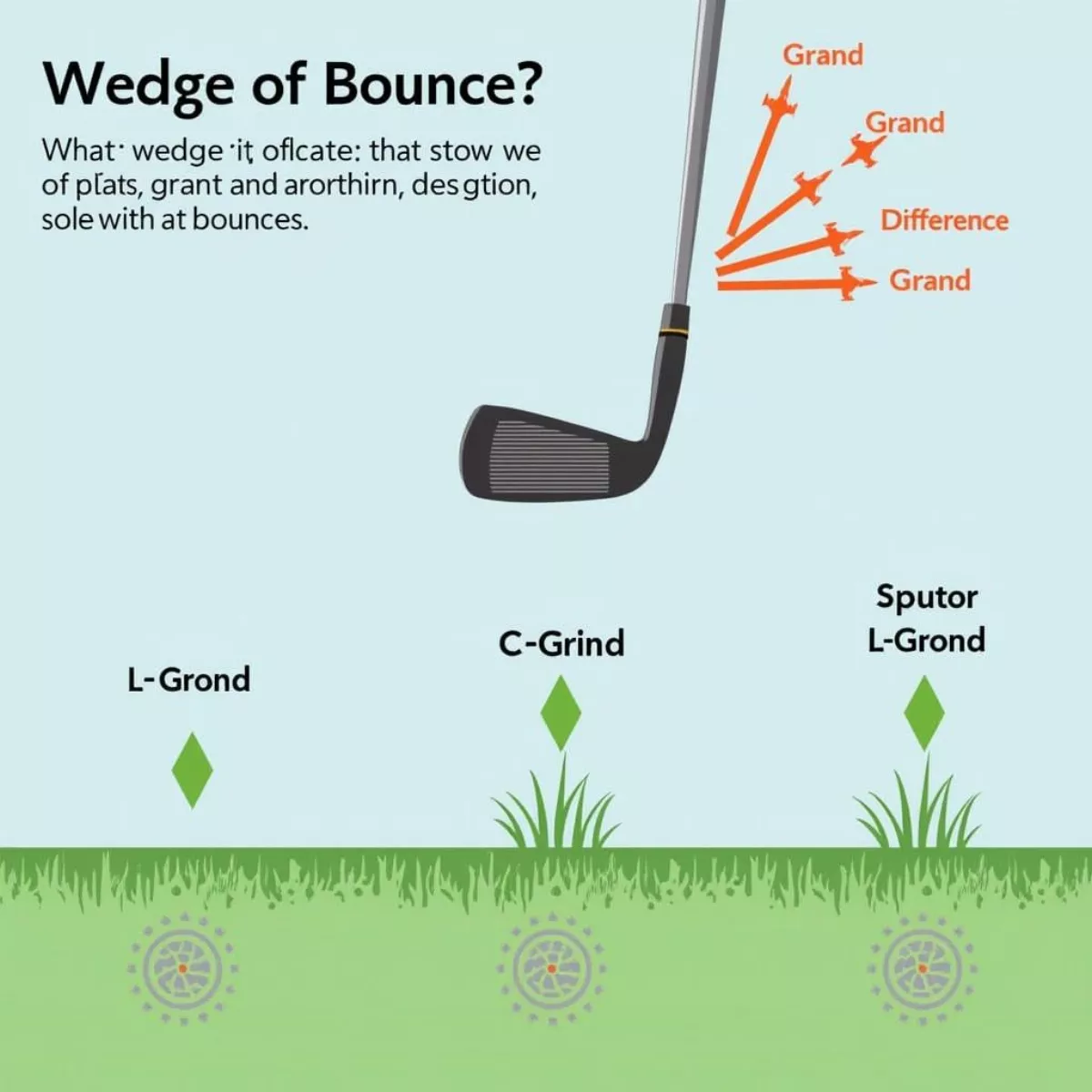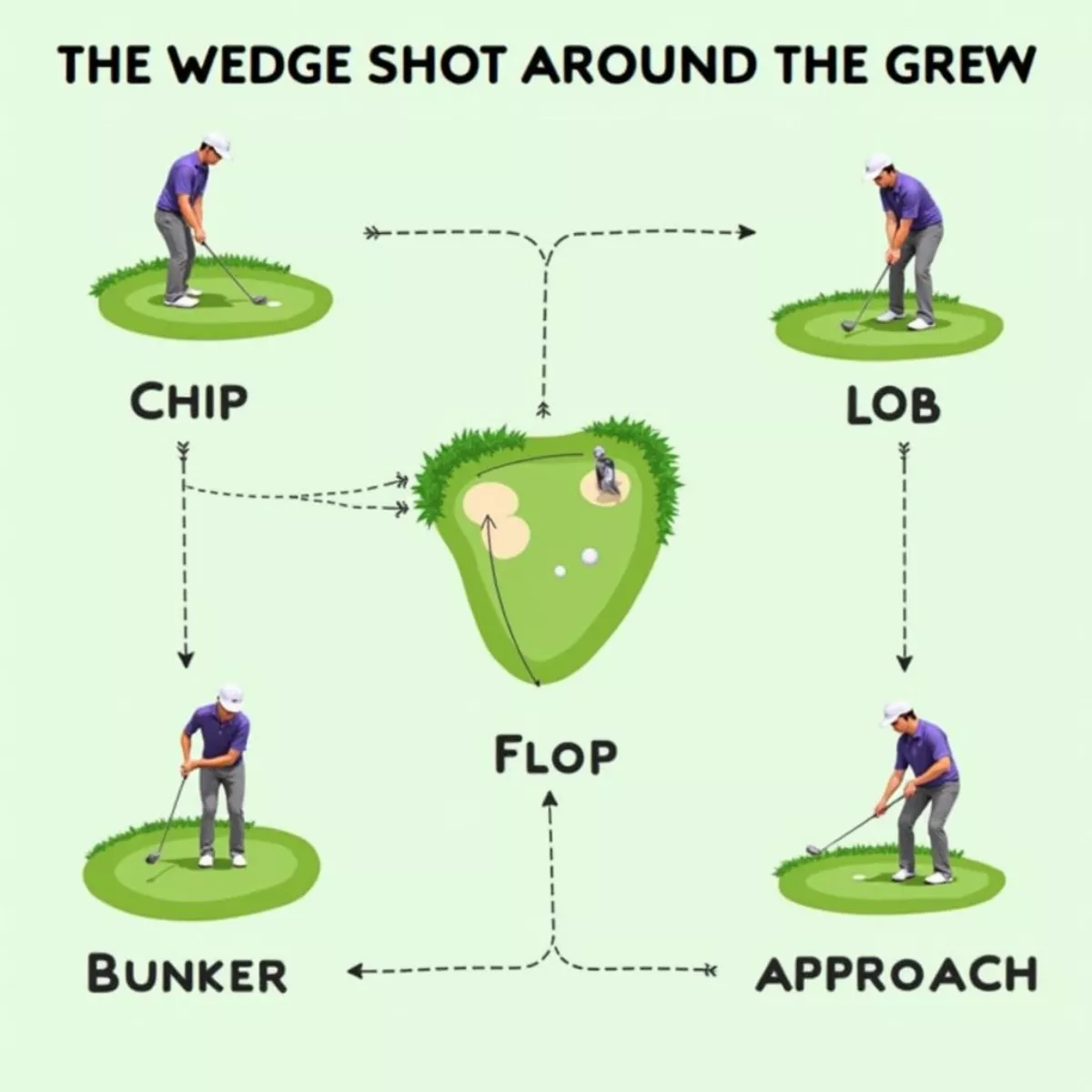When it comes to golf, the short game is often the most crucial aspect of lowering your score, and choosing the right wedge can make all the difference. In this guide, we’ll dive deep into the types of wedges, their uses around the green, and how to select the best one for your game. You’ll walk away armed with the knowledge to improve your short game and impress your friends on the course.
Understanding Wedges: Your Tools for Success
Wedges are specialized clubs designed for high-lofted shots, ideal for getting the ball up quickly and stopping it quickly. Typically, there are four main types of wedges you’ll encounter:
- Pitching Wedge (PW): Often included in standard iron sets, the pitching wedge has a loft of around 44-48 degrees. It’s commonly used for approach shots from around 100-130 yards.
- Gap Wedge (GW): This wedge fills the gap between your pitching wedge and sandwich, with a loft between 50-54 degrees. It’s perfect for distances of 50-100 yards.
- Sand Wedge (SW): With a loft of 54-58 degrees, the sand wedge is specifically designed for bunker shots and shots from the rough. It’s about getting the ball out of trouble and onto the green.
- Lob Wedge (LW): The lob wedge has a loft of 58-64 degrees, making it ideal for high, short shots over obstacles, allowing for a softer landing on the green.
Why Selecting the Right Wedge Matters
Selecting the correct wedge can significantly impact your game. Here’s why:
- Control and Accuracy: The right wedge allows for better precision, making it easier to target pins and control distance.
- Shooting Lower Scores: A good short game leads to a lower score, as it reduces the number of putts needed.
- Versatility: Having a variety of wedges gives you the flexibility to tackle different lies and situations around the green.
 Types of Golf Wedges
Types of Golf Wedges
How to Choose the Right Wedge for You
Choosing the right wedge involves considering several factors:
1. Loft
The loft of your wedge determines how high and how far you can hit the ball. If you can carry it where you aim, you’re set. The general loft progression is:
- Directly under 46° for PW
- 50° for a GW
- 54-56° for a SW
- 58-60° for a LW
2. Bounce
Bounce measures the angle between the leading edge and the lowest point of the sole. A higher bounce (10° or more) is great for softer ground or sand, while a lower bounce (4°-8°) is ideal for firmer surfaces.
3. Grind and Playability
Wedge grinds affect the way your wedge interacts with the turf:
- C-Grind is versatile and great for various lies.
- S-Grind is perfect for tighter fairways.
- L-Grind is excellent for firm turf and tighter shots.
 Golf Wedge Bounce and Grind
Golf Wedge Bounce and Grind
4. Feel and Feedback
When it comes to a wedge, feel is subjective. Test different wedges to find which provides the best feedback and confidence for your swing.
5. Personal Preference
Ultimately, it’s essential to trust your intuition. What works for one golfer may not work for another. Experiment with various brands to find what fits your style best.
Tips for Practicing with Your Wedges
Once you’ve chosen your wedges, practice is essential. Here are some effective practice strategies:
- Short Game Practice: Spend time chipping around the green with each wedge to understand its capabilities.
- Bunker Practice: Utilize your sand wedge in the bunker. Practice hitting from different positions.
- Target Practice: Set up targets at variable distances and practice hitting to them.
Common Wedge Shots Around the Green
Understanding various types of shots you can play with your wedges is essential. Here are a few common wedge shots and when to use each:
| Shot Type | Wedge Type | Best Use Case |
|---|---|---|
| Chip Shot | PW or GW | Short, low-rolling shots |
| Lob Shot | LW | Over hazards or tight pins |
| Bunker Shot | SW | Getting out of sand traps |
| Flop Shot | LW | Soft, high shots for short distances |
| Approach Shot | PW or GW | From the fairway to the green |
 Common Golf Wedge Shots Around the Green
Common Golf Wedge Shots Around the Green
Key Shots Explained
- Chip Shot: Use a PW or GW for short, low shots around the green. Focus on minimal wrist action and a smooth stroke.
- Lob Shot: A LW is ideal for clearing obstacles. Open the clubface, and your follow-through should be higher than your backswing.
- Bunker Shot: Strike the sand behind the ball. The goal is to use your SW to avoid the ball sinking.
Key Takeaways
- Choose the Right Loft: Match your wedge loft to your specific needs and distances.
- Pay Attention to Bounce: Higher bounce for soft surfaces and lower bounce for firmer turf.
- Practice Regularly: Spend time on the range to get comfortable with each wedge.
- Experiment with Grinds: Find the grind that works best for your course conditions.
- Trust Your Instincts: Ultimately, pick a wedge that feels right for you.
Frequently Asked Questions (FAQs)
1. How many wedges should I carry in my golf bag?
Most golfers benefit from carrying 3-4 wedges, including a PW, GW, SW, and LW.
2. What is the difference between a Gap Wedge and a Sand Wedge?
A gap wedge is better suited for approach shots 50-100 yards away, while a sand wedge is primarily used for escaping sand traps.
3. Should I use my PW more often than other wedges?
It depends on your comfort level and the distance needed. Initially, you might use your PW more, but diversifying your wedge use can improve your game.
4. Can I use a regular iron instead of a wedge?
While possible, using a designated wedge can provide better loft, control, and spin.
5. How do I determine which grind to use?
Assess your typical playing conditions. Consult with a professional fitter if necessary.
6. What type of bounce is best for wet conditions?
A higher bounce (10°+), like that of the sand wedge, works better in wet conditions, minimizing club digging.
7. Are wedges interchangeable?
Wedges can perform different functions, so it’s best to have a variety to tackle different scenarios.
8. How does the lie angle affect my wedge shots?
A proper lie angle ensures your clubhead contacts the ball squarely, enhancing accuracy.
9. Can my skill level influence the type of wedges I use?
Yes! Beginners may prefer more forgiving wedges, while advanced players might prioritize versatility and control.
10. What’s the best way to clean my wedges?
Use a soft brush and water to clean grooves; ensure they’re dry to prevent rusting.
Conclusion
Choosing the right wedges and practicing with them can significantly elevate your short game. Focus on loft, bounce, feel, and personal preference, and soon you’ll be chipping your way to lower scores. So, next time you’re prepping for a round, make sure your wedge game is up to par. Happy golfing!
This guide serves golfers at any level, helping you understand and improve your wedge play around the green. Feel free to explore more resources on our site. Enjoy your game!

